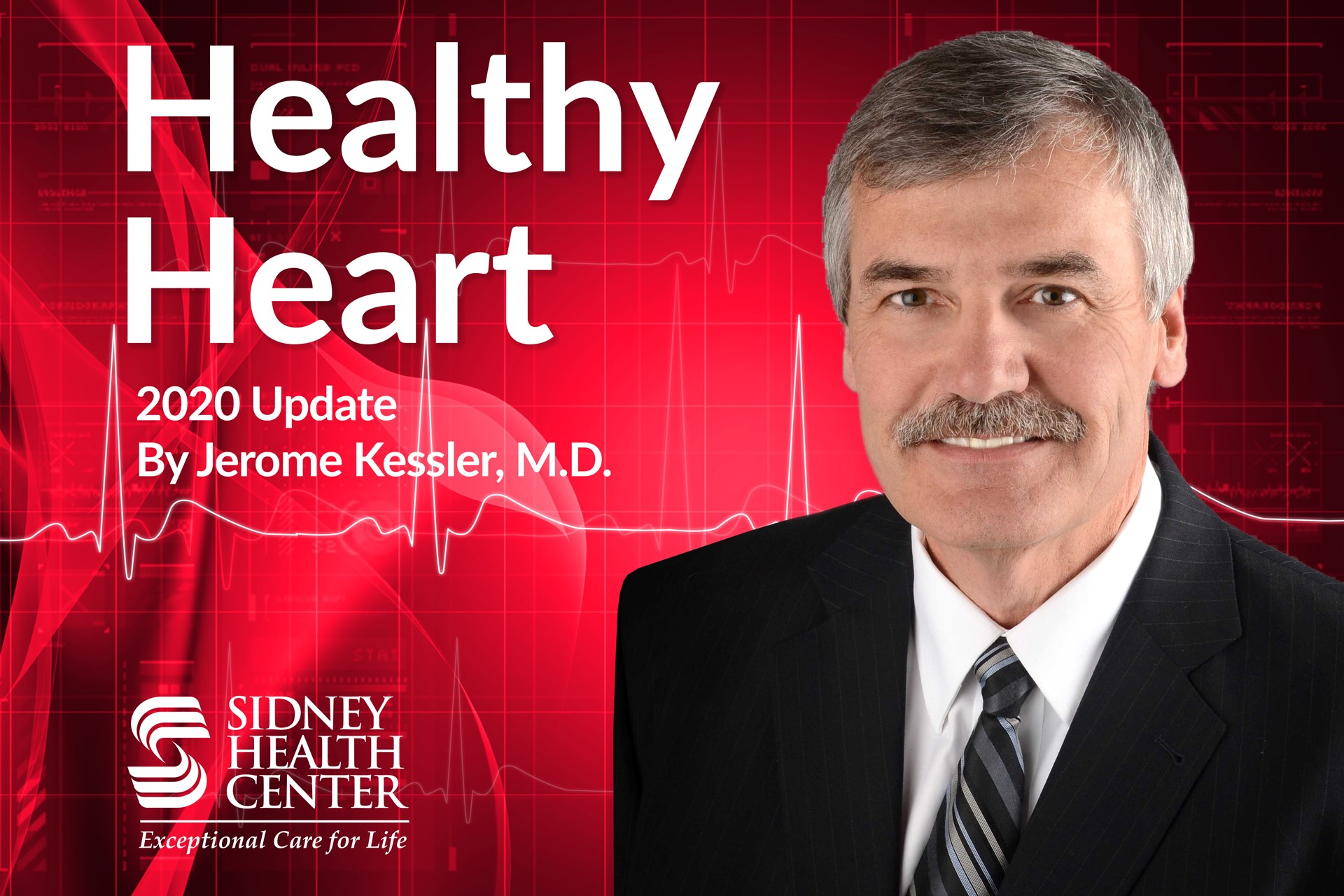Healthy Heart – 2020 Update

There are some recent changes in the recommendations for cardiovascular disease (CVD). Thankfully the death rate from CVD declined by 60% since 1950. Heart attacks and strokes caused well over 50% of deaths in 1980, but approximately 35% of deaths in 2016. Improved lifestyle, less tobacco use, and treatment of modifiable risk factors have helped. In the 1960s approximately 42% of Americans were regular smokers. This is currently down to 14%. There has also been improvement in management of management of acute myocardial infarction (MI) with “clot busting drugs,” use of coronary stents, and other treatment options. We would like to prevent these emergencies completely, however.
It is interesting to see the changes in lipid recommendations over the years. The guidelines for the National Heart, Lung, and Blood Institute in 2002 recommended that all patients with LDL values greater than 190 should immediately start lipid-lowering drugs. Medications were also recommended for LDL values over 160 if the patient had more than 2 risk factors, with the goal of getting the LDL less than 130. If the patient had 3 or more risk factors then the LDL goal was less than 100. We now recommend that LDL be less than 70 in patients who have established coronary artery disease (or equivalent risk factor, primarily diabetes).
Every few years these lipid guidelines are reviewed. In 2013 the guidelines implied that almost everybody should be on statins. Some people have joked that “Lipitor should be put in that drinking water.” Later there was de-emphasis on actual target LDL values. The last published guidelines from the American Heart Association (AHA) and American College of Cardiology (ACC) in 2019 re-emphasized the importance of determining an individual’s risk of cardiovascular disease.
It is recommended that a person calculate their MACE (major adverse cardiovascular event) 10 year risk. These MACE calculators are readily available online, but your provider can also help you determine your 10 year risk. You should use this information to determine your need for primary prevention of cardiovascular disease based on age, sex, diabetes, smoking history, family history, weight, BP, and other coexisting risk enhancers.
The goals are now simplified in order to make this information easier to understand. If the 10-year risk is over 20% (high risk) then use “high intensity statins.” These patients should be put on either atorvastatin (Lipitor) or rosuvastatin (Crestor) in reasonably high doses. The goal is to lower LDL by 50% or more. The other lipid-lowering drugs are not felt to provide adequate protection. If the 10-year risk is over 5% but under 20% (intermediate risk), especially in the presence of risk enhancers, then use “moderate intensity statins.” This would generally include lower doses of Lipitor and Crestor. It is also acceptable to use Zocor or Pravachol. The goal is to lower LDL by 30-50%. If the 10-year risk is under 5% (low risk) then emphasize lifestyle rather than drug therapy.
If a person does not tolerate the first statin that they are on then they should switch to another statin to see if this agrees with them. Muscle aches are not uncommon, and often go away. More serious statin side effects (myositis or hepatitis) occur in less than 1% of patients. If the patient is still not at goal then they should be put on Zetia (ezetimibe). One of the newer lipid lowering agents (Repatha) may be tried for refractory hyperlipidemia, but these agents are expensive and have to be given by injection. Fish oil (omega-3 fatty acids), fibrates, and niacin products are no longer recommended. Use of fibrates (like fenofibrate) should only be considered if there is severe hypertriglyceridemia (triglyceride levels greater than 600).
There used to be a debate on how low a person’s blood pressure should be. At one time it was said that they BP target should be less than 140/90. Not everyone agreed with this guideline. At this time the guidelines are simplified. All patient care groups should now have a BP less than 130/80. There are exceptions to this rule, but that is the general guideline.
Anyone with a history of a heart attack, stroke, coronary artery bypass, coronary stent, peripheral arterial disease, or diabetes should use low-dose aspirin to prevent “secondary” events. Several large scientific studies have now shown that the use of aspirin for “primary prevention” is no longer recommended, especially in older individuals, because of the risk of bleeding (hemorrhagic strokes, risk of falling, bleeding ulcers, etc). The disadvantages of aspirin side effects are felt to outweigh the benefit of being on this agent in most cases. Consider using low-dose aspirin if the younger patients have increased CV risk but no bleeding risk (ulcers, etc).
There are some risk factors that a patient has no control of – family history, male sex, inherited lipid disorders, early menopause, preeclampsia, or South Asian ancestry. People with inflammatory conditions (rheumatoid arthritis, lupus, etc) also have increased risk. The other risk factors are felt to be “modifiable.” Sedentary lifestyle, tobacco use, unhealthy dietary habits, and obesity are risk factors that we do have control over. The presence of diabetes, metabolic syndrome, hypertension, and hyperlipidemia are treatable.
In general the outlook on cardiovascular disease is fairly good, especially when considering how more prevalent it was in the past. There are things that a person can do on their own. It is recommended that you visit with your health care provider to monitor and treat these risk factors. Early recognition of heart attack symptoms and initiation of effective treatment is also extremely important. I wish you success in dealing with these heart healthy issues.
